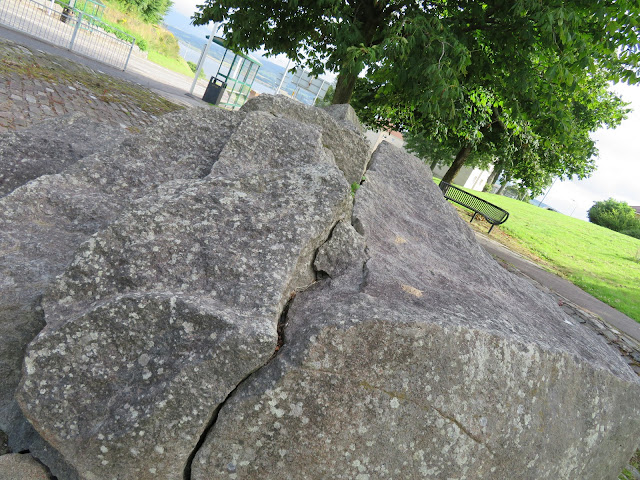It used to sit on the other side of the road in the days when the road that led from Port Glasgow to Kilmacolm was a quiet country track. In "Days At the Coast" written by Hugh Macdonald in 1878 it is described -
"At this place, in the corner of a cornfield, is an immense isolated mass of whin, which from time immemorial has borne the somewhat suggestive titlte of the "Bogle Stane" ... the favourite haunt of a certain mischievous imp, who took a wicked delight in frightening belated travellers."
It was also said that the stone was a favourite meeting place for young people and their rowdy behaviour annoyed a local minister so much that he decided to blow the stone to smithereens! The local people were so annoyed by his actions that they gathered up the pieces they could find and put them back together with the help of a local landowner - Auchinleck. A poem was written in the Stone's honour and said at one time to have been inscribed on it -
"Ye wearie travellers passing bye,
Rest and be thankfu' here,
And should your lips be parched and dry,
Drink of my waters clear;
I am the far-famed Bogle Stane,
By worldly priest abhorred,
But now I am myself again
By Auchinleck restored."
Today the Bogle Stone is right at a bus stop on the main road. So, still a stopping place for travellers!



